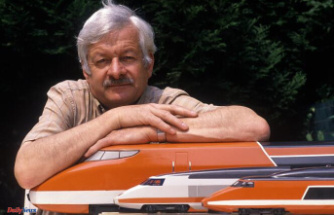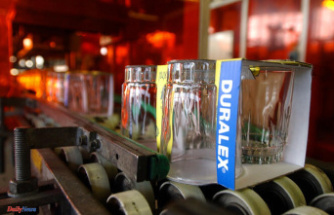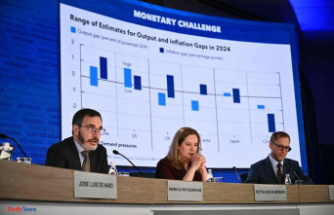Maestro Nuccio Bertone wrote design history. He didn't draw anything himself, but created automotive fashion for millions. This is how Bertone created wedge shapes for supercars and elegant edges for mass brands from Alfa to VW. In 1912 the Carrozzeria Bertone was founded in Turin.
Bertone - when design fans hear this name, they think of the dramatic wedge shapes that characterize the Lamborghini Countach, Maserati Khamsin or Fiat X1/9. The clear edges of style-defining concept cars such as BMW Garmisch, Volvo Tundra or Mazda MX-81 also come from Carrozzeria Bertone, founded in Turin in November 1912. Above all, however, it was haute couture for mass models with which star couturier Nuccio Bertone wrote design history from the 1950s onwards.
Whether Alfa, Audi, Citroën, Lancia, Opel or VW, many brands wanted to work with the equally creative and courageous design house Bertone - and Japanese like Mazda only achieved global success with limousines designed in Italian lightness. Only Ferrari could not win Bertone as a customer despite all efforts, the supercar builder from Maranello consistently trusted in Pininfarina's artistic expertise.
In fact, Nuccio Bertone never drew a single one of his masterpieces himself, the celebrated maestro always focused on discovering and developing up-and-coming designers. Famous names like Franco Scaglione, Giorgetto Giugiaro, Marcello Gandini or Marc Deschamps, many star designers started their careers with this body. Nuccio Bertone himself, however, was showered with honorary titles for his influence on automotive fashion and his works were celebrated as utopian art objects as early as 1977 at the Documenta in Kassel.
Often enough, the visionary Bertone style studies did not embody science fiction, but future production cars. Incidentally, this also applies to the Stratos 0 and Stratos HF designs shown in Kassel, which had already gone into series production as Lancia sports cars.
These fast, sculptural wedges were created by the designer of the century, Marcello Gandini, who had been with Bertone since 1965 and led Carrozzeria Bertone into a golden era as the most progressive design studio at the time. Gandini's radical concepts delighted Bertone's customers and often resulted in some of the most outstanding supercars ever to be seen on the road and at motor shows.
Whether it was the Lamborghini Miura, Marzal, Espada or Alfa Romeo Carabo and Montreal in the 1960s or the Lamborghini Countach and Lamborghini Bravo in the 1970s, these cars made design history. And those designs gave Nuccio a rock-solid confidence in the future, even in the years after the first oil crisis, when some supercar manufacturers - including his client Lamborghini - went bankrupt. After all, Bertone had a second mainstay right from the start: the production of small and large runs for customers such as Fiat, Lancia, Alfa and later also Volvo, Daihatsu and Opel.
The workshop set up by wheelwright Giovanni Bertone was also on the road to success in 1912, although in the first eight years it was still about stylish bodies for carriages. In the 1920s, the first orders from automobile companies began to arrive and Bertone soon made a name for itself as a specialist in stylish designs and bodies built with the highest level of craftsmanship, especially for the sporty Fiat and Lancia.
The highly talented son and successor Giuseppe - affectionately called "Nuccio" by his father - took over a managerial position in the up-and-coming Carrozzeria in 1933 at the age of 19 and in 1950 the entire business. Shortly thereafter came the first crisis, which Bertone used to reinvent his company. For many manufacturers, the advent of the self-supporting body ended the business with vehicle bodies tailored to the individual wishes of wealthy customers. Nuccio Bertone now remembered his skills as a networker, made contacts with car manufacturers and up-and-coming couturiers. As a successful recreational racer, he was also enthusiastic about aerodynamic shapes, which he wanted to build in series for volume manufacturers.
In 1951, Bertone found a freelance designer in Franco Scaglione, who dressed British MG sports cars and an Abarth coupé for Bertone, but above all realized the beguilingly beautiful Alfa Giulietta Sprint coupé, which Bertone built in considerable numbers as a commissioned work. The foundation for the ascent was laid, Nuccio Bertone, who always appeared in an elegant suit with a handkerchief, was suddenly one of the top design addresses in post-war Europe.
Whether concept cars for Alfa Romeo, such as the spectacular BAT models, designs for Aston Martin (DB2), Maserati (3500) or production cars such as the Jaguar XK 150, NSU Sport Prinz, Simca 1000 Coupé or BMW 3200 CS, the inquiries at times exceeded the Capacities of the design studio and the newly built factory in Grugliasco. This became too much for Franco Scaglione in 1959 and so Nuccio Bertone looked for a successor. Once again, the talent scout had the right instinct: right at the beginning of his career, Giorgetto Giugiaro delivered two top-class designs for the Corvair Testudo and Ferrari 250 GT, both of which Nuccio Bertone promptly used as private cars.
Now more and more companies wanted the Bertone signet on their vehicles, above all, traditionally, Alfa Romeo on coupés like the 2600 Sprint. But Mazda also had its first globally successful model, the Luce 1500/1800, and the powerful rotary engine coupé, the R130 Luce, launched in Italy in 1969, elegantly clad in Italy.
Bertone's production facilities continued to be extremely profitable, as this is where bestsellers such as the Alfa Giulia GT (from 1963), the Fiat 850 Spider (from 1965) and the mid-engine runabout Fiat X1/9 (from 1972) rolled off the assembly line. By then Giugiaro had already handed over the office of the design director to Marcello Gandini, from whose pen not only visionary sports cars emerged, but also affordable mass-produced models such as the Audi 50, the related VW Polo, and even the Citroën BX from 1982. At that time, Gandini already had Bertone left and it was up to Marc Deschamps to find futuristic shapes for the 1990s, implemented in the Citroën XM.
Bertone now established itself more and more as an extended workbench for many manufacturers: Volvo had its coupés 262 and 780 assembled in Italy, Opel commissioned the Kadett Cabrio and later the open Astra. Then disaster struck: Nuccio Bertone died in the spring of 1997 and shortly thereafter Bertone customers began to produce their coupés and convertibles in-house. The Carrozzeria Bertone collapsed financially, and a transformation into a design think tank finally failed in 2014.
Expert Martin Heinze from the classic car rating organization Classic Analytics explains how Bertone differentiated itself from the competition: "While its competitor Pininfarina always stood for timeless elegance, Bertone often dared a modern to futuristic style. The best example to this day is probably the Lamborghini Countach, which almost consists exclusively of corners and edges. For the first series of this design classic you have to pay around 800,000 euros in good condition."
Chronicle
1884: Giovanni Bertone is born as the sixth of seven sons of an Italian farmer and later completes an apprenticeship as a wheelwright
1912: In November, at the age of 28, Giovanni Bertone founds a company for the repair and construction of carriages in Turin. In addition to Giovanni Bertone himself, the company has three employees
1914: Giovanni Bertone's second son, Giuseppe, is born on July 4th. From birth, he was given the nickname "Nuccio". During the First World War, Bertone is forced to close his workshop
1920: Reestablishment of the company in Via Monginevro in Turin with a different focus: automobiles
1921: First order for the production of car bodies, this for a sports car from the Società Ligure Piemontese Automobili (SPA)
1934: At the age of 19, Giuseppe "Nuccio" Bertone joins his father's company, which has around 50 employees
1939: During the Second World War, the demand for cars and especially for exclusive small-series vehicles from coachbuilders dropped drastically. Nevertheless, production continued at the Corso Peschiera plant (Lancia Aprilia, Fiat 2800 Cabriolet). Until the end of the war, however, Bertone concentrated primarily on the construction of military vehicles
1945: After the Second World War, Nuccio Bertone takes over the family business and hires several well-known designers. His first chief designer became Franco Scaglione, who was later followed by Giorgetto Giugiaro and, in 1965, Marcello Gandini
1952: First major post-war orders from MG and Bristol
1953: Bertone wins an Italian motorsport championship with a sports car developed in-house based on the Fiat 500 Topolino
1954: Presentation of the Alfa Romeo Giulietta Sprint at the Turin Salon. By 1965, almost 40,000 of the coupés built by Bertone were built from the originally planned 1,000 units
1957: The body for the NSU Sport Prinz is now also designed and manufactured at Bertone. The total production exceeds the capacity of the Corso Peschiera plant
1959: A plant in Grugliasco (Turin province) with 550 jobs is put into operation
1960: In this year, more than 31,000 bodies are built at Bertone for the first time
1965: Giorgio Giugiaro moves from Bertone to Ghia and Nuccio Bertone hires the young Marcello Gandini as the new designer in charge. Masterpieces such as Lamborghini Miura, Marzal and Espada as well as Alfa Montreal and Carabo, Lacia Stratos Zero and Lamborghini Countach are created under Gandini. With the launch of the Fiat 850 Spider manufactured by Bertone, Nuccio Bertone decides to increase production capacity to 120 units per day. Around 140,000 units of the 850 Spider were made by 1972, most of them for the US market
1966: Nuccio Bertone marries Ermelinda, called "Lilli", who will later take over the management of the company
1970: Bertone now employs 1,500 people
1972: Company founder Giovanni Bertone dies at the age of 88. In the same year, production of the Fiat X 1/9 begins, of which around 160,000 units are manufactured. Bertone reached the peak of his influence on international automotive design in the 1970s with designs by Marcello Gandini. More than 140 vehicles are now body shelled daily in the Bertone works by around 1500 employees
1977: Bertone is allowed to show his designs for the Lancia Stratos 0 and for the Lancia Stratos HF at the documenta 6 art exhibition in Kassel
1979: Marcello Gandini separates from Bertone in June, the French Marc Deschamps becomes his successor and designs, among other things, the Lamborghini Athon and Corvette Ramaro as well as the Lotus Emotion
1981: In the early 1980s, the Ritmo Cabrio and the X 1/9 are produced by Bertone and even sold under their own brand
1987: Beginning of the cooperation with General Motors with the production of the Kadett E Cabrio. Two generations of the Astra Cabrio (Astra F and G) and an Astra Coupé (Astra G) will follow later.
1989: Nuccio Bertone receives an honorary doctorate from the Art Center College of Design in Pasadena (USA) for his design work
1997: Giuseppe "Nuccio" Bertone dies on February 26, the eve of the Geneva Motor Show. Bertone's widow Ermelinda takes over the management of the company
2006: Nuccio Bertone is posthumously inducted into the Automotive Hall of Fame in Detroit
2009: The Grugliasco plant is sold to Fiat
2012: The Bertone company celebrates the 100th anniversary of its founding
2014: Bertone is insolvent and liquidated, all assets are sold
2022: The Bertone community commemorates the 110th anniversary of the founding of the company












